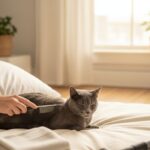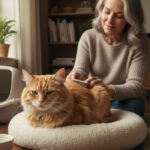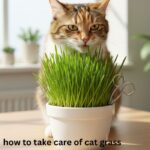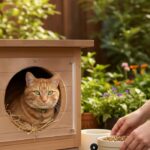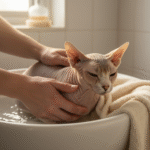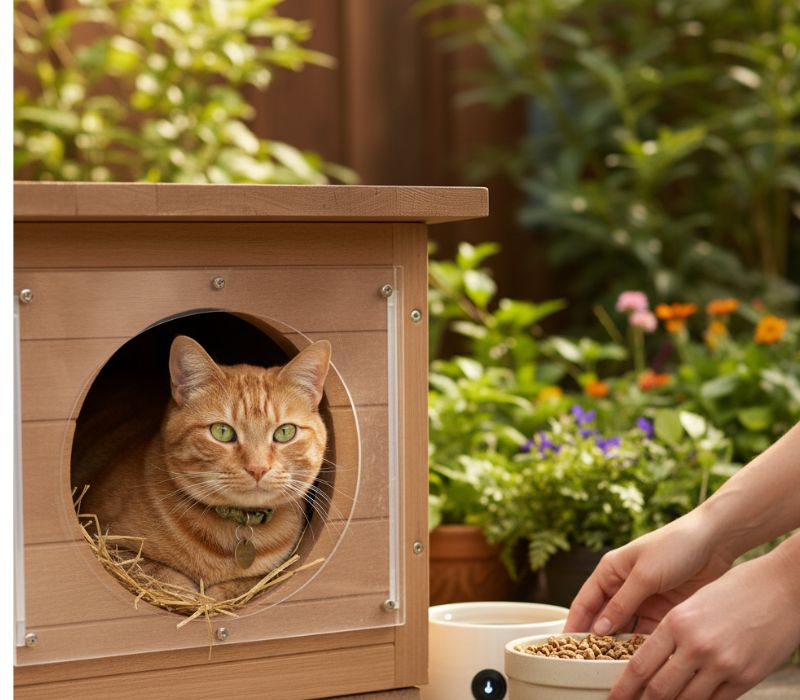Decode the emotional and physical changes in super senior cat behavior. Get expert advice on health, comfort, and mental well-being for your senior kitty.
Decoding the Silent Language of the Aged Feline
As cats transition from mere seniors into the venerable “super senior” category—typically around 15 years and beyond—their physical and behavioral landscapes undergo profound transformations. The once agile, playful hunter now spends more time in deep repose, and the familiar routines you shared may start to subtly shift. Understanding these changes isn’t just about noting the passage of time; it’s about interpreting a silent language. Super senior cat behavior often provides the earliest, most critical clues about their underlying health and comfort levels. This comprehensive guide will meticulously explore the multifaceted aspects of an aging cat’s life, helping you not only recognize the signs but also adapt your caregiving approach to ensure their final years are as rich, comfortable, and dignified as possible. We will delve into everything from altered sleep cycles and vocalizations to managing chronic pain and the intricacies of feline cognitive function, all with the goal of strengthening the irreplaceable bond you share.
The Physical Realities of Super Senior Cat Behavior: Activity and Rest
The Shift to Serenity: Decreased Activity and Longer Sleep Periods Are Common
One of the most immediate and noticeable changes in super senior cat behavior is the dramatic downshift in energy. Your cat is not suddenly lazy; they are experiencing the physiological realities of advanced age.
- Physiological Basis for Repose: As cats age, their muscle mass naturally decreases (sarcopenia), and their joints may begin to ache from osteoarthritis, a condition often hidden but remarkably prevalent. This physical discomfort makes movement and sustained play taxing. Consequently, the time your super senior cat behavior dedicates to sleep and rest increases substantially. A cat that once enjoyed a full-throttle sprint through the hallway might now only manage a slow, deliberate walk to the food bowl.
- Differentiating Rest from Lethargy: While more sleep is typical, owners must learn to distinguish this natural resting pattern from outright lethargy. Is the cat merely napping deeply, or is it difficult to rouse? A healthy, albeit aged, cat should still respond to mealtime cues or a favorite sound. Lethargy—an inability or refusal to move—is a critical sign demanding immediate veterinary attention, as it can signal serious issues like heart disease, anemia, or profound discomfort. The nuance in super senior cat behavior is paramount here.
- Creating the Ultimate Comfort Zone: Accommodating this need for increased rest is a vital part of effective care. Elevated, difficult-to-access perches should be replaced with low-slung, orthopedically supportive beds. Consider memory foam or heated pet beds to soothe aching joints. These adjustments minimize the energy expenditure required for daily life, allowing your cat to reserve its limited vitality for meaningful interactions. Observing your super senior cat behavior will often show their preference for quiet, safe, and warm locations.
Communication and Cognitive Changes in Super Senior Cat Behavior
Super Senior Cat Behavior and the Call for Connection: May Become More Vocal Due to Confusion or Sensory Decline
A surprising number of senior cats undergo a transformation in their vocalization habits. A quiet cat may suddenly become a persistent meower, particularly at night. This change in super senior cat behavior is seldom an attempt at annoyance; it is a signal rooted in decline.
- Sensory Loss and Confusion: Just like humans, aging felines often experience a decline in sight and hearing. Navigating a familiar house in the dark, or even the daytime, can become disorienting. They may vocalize as a form of “echolocation” or simply as a distress call because they have momentarily lost their bearings or cannot locate you.
- Feline Cognitive Dysfunction (FCD): The most concerning reason for increased vocalization in super senior cat behavior is FCD, a syndrome similar to dementia or Alzheimer’s disease in humans. Disorientation is a hallmark of FCD. Affected cats may pace aimlessly, stare blankly at walls, or exhibit “sundowning,” which involves heightened anxiety and vocalization in the evening hours.
- Pain and Discomfort: While not always the case, a persistent, mournful cry can be a direct expression of chronic pain, often from untreated arthritis. Cats are masters of masking pain, but when it becomes severe enough, it can manifest as excessive vocalizing. Any sudden, sharp increase in this super senior cat behavior requires a thorough pain assessment by a veterinarian.
Possible Signs of Feline Cognitive Dysfunction (Similar to Dementia)
FCD is a common, though often under-diagnosed, element of super senior cat behavior. Recognizing the D-I-S-H-A-A acronym is crucial for early intervention:
- Disorientation: Staring, getting stuck in corners, wandering.
- Interactions: Changes in social engagement (increased clinginess or withdrawal).
- Sleep/Wake Cycle: Disrupted patterns, typically sleeping all day and wandering/vocalizing all night.
- House-Soiling: Urinating or defecating outside the litter box.
- Activity: Decreased or altered activity, like repetitive pacing.
- Anxiety: Heightened stress, fear, or startle response.
If you observe these cumulative behaviors, discuss FCD with your vet. Environmental enrichment, dietary supplements, and sometimes medication can slow the progression of this challenging facet of super senior cat behavior.
The Nutritional Needs and Dental Health of Your Super Senior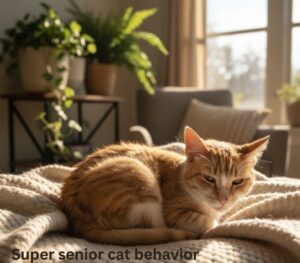
Appetite Changes Can Signal Dental Issues or Health Problems
A healthy appetite is a strong indicator of well-being, but changes are frequent aspects of super senior cat behavior. An owner must never dismiss a loss of appetite, even if temporary.
- The Crux of Dental Disease: Up to 90% of cats over the age of four have some form of periodontal disease. By the super senior years, this can escalate to severe pain. A cat with a rotten or painful tooth may still approach the bowl but suddenly drop the food or chew on one side of their mouth. They might prefer wet, soft food over dry kibble. This subtle change in super senior cat behavior is a massive red flag for oral pain.
- Systemic Disease Indicators: Appetite loss (anorexia) can be the first, and sometimes only, sign of critical systemic issues like chronic kidney disease (CKD), hyperthyroidism, or diabetes. Conversely, a sudden, insatiable hunger (polyphagia) can point toward conditions like hyperthyroidism or poorly controlled diabetes.
- Weight Management is Key: Maintaining an ideal body weight is crucial. While many super seniors become underweight due to muscle wasting and reduced food intake, obesity remains a concern, particularly as it exacerbates mobility issues. Regular, careful weight monitoring is essential for tracking both the progression of disease and the efficacy of nutritional management in super senior cat behavior care.
Emotional and Social Dimensions of Super Senior Cat Behavior
The Spectrum of Affection: Increased Clinginess or Withdrawal from Social Interaction
The emotional world of the aging cat can become quite volatile, leading to shifts in social interaction that confuse owners.
- The Need for Reassurance: Some super seniors become extremely dependent, showing increased clinginess. This super senior cat behavior stems from their sensory decline and cognitive disorientation. They seek the safety and familiarity of their owner’s presence as a grounding mechanism. They may follow you from room to room or demand more lap time.
- The Retreat: Conversely, some super seniors withdraw. This can be a sign of chronic pain, as they instinctively want to hide their vulnerability. It can also be a facet of FCD or general malaise. A cat that suddenly avoids its favorite spots or the main living areas is signaling discomfort.
- Managing Social Dynamics: If the cat is clingy, indulge them gently; your presence is a comfort. If they withdraw, respect their space but ensure they are easily accessible for checks, feeding, and litter box use. Never force interaction. Respecting the social boundaries of super senior cat behavior is vital for maintaining trust.
Mobility and Environmental Adaptation
Mobility Challenges: Litter Box Accidents May Occur Due to Arthritis or Reduced Mobility
Incontinence is distressing for both the cat and the owner, but it is rarely a malicious act. When observing this unfortunate super senior cat behavior, always suspect a physical barrier.
- The Pain Barrier: Arthritis makes climbing over the high sides of a traditional litter box agonizing. The cat begins to associate the box with pain and seeks out easier, low-profile alternatives—the floor, a rug, or a bathmat. The solution lies in providing senior-friendly boxes with one very low side, or even flat-entry trays.
- Cognitive Errors and Urgency: FCD can contribute to accidents, as the cat forgets the location or purpose of the box. Additionally, medical conditions like CKD or diabetes cause polydipsia (increased thirst) and polyuria (increased urination), leading to a higher volume of urine and a greater sense of urgency that a super senior with stiff joints cannot manage in time.
- Strategic Placement: Place multiple, easily accessible litter boxes on every level of the house. Ensure the box substrate is non-scented and soft. Every instance of this particular super senior cat behavior should be treated as a physical problem until proven otherwise by a veterinarian.
Sensitivity to Temperature—Prefers Warm, Cozy Spots
The super senior cat has a decreased ability to regulate its own body temperature, and chronic joint pain is exacerbated by cold and dampness. This is why their super senior cat behavior often centers on seeking out heat.
- The Search for Radiance: You will find your cat monopolizing sunny spots, sleeping next to radiators, or spending excessive time under blankets. Providing safe, consistent sources of warmth, like microwavable heat pads (always wrapped in a towel) or low-wattage heated pet beds, is a core element of supportive care. However, ensure they can always move away from the heat source to prevent overheating.
Grooming and Maintenance of Super Senior Cat Behavior
Grooming Habits May Decline; Regular Brushing Helps
A healthy cat meticulously grooms itself. A decline in grooming, or an inability to reach certain spots, is a definitive and visible change in super senior cat behavior.
- The Inaccessibility Factor: Stiff hips and backs make twisting and reaching impossible. This leads to matting, particularly around the hindquarters, base of the tail, and along the spine. These mats pull on the skin, causing pain and creating a perfect environment for skin infections.
- The Necessity of Intervention: The owner must step in as the cat’s primary groomer. Daily, gentle brushing not only removes shedding fur and prevents matting but also serves as a soothing, bonding experience. It is a critical aspect of monitoring and managing super senior cat behavior and comfort. It also allows you to check for lumps, bumps, or skin lesions that the cat cannot reach. If mats are severe, a professional groomer or vet may be needed for safe removal.
Emotional Health and Security
May Become More Anxious or Easily Startled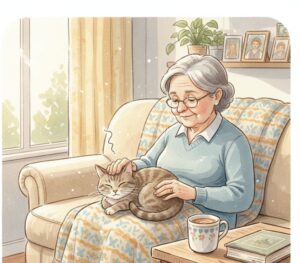
The super senior cat lives in a world of declining sensory input, which can be frightening and isolating. This often translates into heightened anxiety.
- Reduced Predictability: Loud noises, sudden movements, or even unexpected visitors can become overwhelming because the cat’s ability to process and adapt to stimuli is diminished. The cat may jump, hide, or even exhibit defensive aggression as a coping mechanism. This anxious super senior cat behavior is a plea for a quiet, predictable environment.
- Creating a Sanctuary: Maintain a consistent routine for feeding, play, and bedtime. Speak in a calm, low voice. Provide safe, low hiding spaces that are always accessible. Feliway diffusers (synthetic pheromones) can also be highly effective in reducing stress and calming the anxious super senior cat behavior.
The Cornerstone of Care: Veterinary Oversight
Regular Vet Check-ups Are Crucial for Monitoring Age-Related Changes
The single most important action you can take for your aging feline is to commit to a rigorous schedule of veterinary care. For a super senior cat, an annual check-up is insufficient; twice-yearly visits are mandatory.
- The Rapid Pace of Decline: Cats age rapidly, and diseases like CKD or hyperthyroidism can progress significantly over a six-month period. Early detection is the only path to effective management. These check-ups should include comprehensive bloodwork, a urinalysis, and a physical examination focused on palpating joints, listening to the heart, and assessing body condition score.
- Proactive Pain Management: Assume your super senior cat behavior includes an element of chronic pain, even if they show no obvious signs. Work with your vet to develop a pain management plan. This might include joint supplements, specialized diets, or low-dose non-steroidal anti-inflammatory drugs (NSAIDs) monitored carefully with bloodwork. Proactive pain relief can revolutionize a senior cat’s quality of life.
Conclusion: A Partnership of Compassion
Caring for a cat exhibiting super senior cat behavior is a profound act of love. It moves beyond simple pet ownership to a partnership of compassionate care. By understanding that decreased activity is often rooted in physical pain, vocalization in confusion, and accidents in mobility issues, you shift from reacting to a problem to proactively managing an age-related condition. Your commitment to bi-annual veterinary visits, environmental modifications, and gentle, consistent companionship will ensure that your beloved super senior cat experiences their twilight years with maximum comfort, dignity, and unwavering love. Embrace these final chapters—they are a testament to the enduring power of the human-feline bond.
How can I tell if my cat’s decreased activity is normal aging or a sign of pain?
While decreased activity and increased sleep are hallmarks of super senior cat behavior, assuming it’s “just old age” is a common, and often harmful, oversight. Normal, age-related rest means the cat is still able to move, climb, and play briefly when motivated, but simply chooses to rest more. A sign of pain, most frequently osteoarthritis, is a functional change. Look for difficulty in executing routine movements: a noticeable hesitation before jumping onto the sofa, a stiffness upon rising from a nap, an inability to groom the back half of their body, or reluctance to use the stairs. The cat may also develop a “clunky” gait instead of the fluid movement of a healthy cat. A cat in chronic pain typically withdraws and avoids being touched, especially over the hips or spine. If your super senior cat behavior includes changes in posture, an unwillingness to engage with familiar toys, or signs of lameness, you must consult your veterinarian for a pain assessment. Early, proactive pain management can significantly improve their quality of life.
What are the key differences between normal senior cat vocalization and a sign of Feline Cognitive Dysfunction?
Normal senior cat vocalization often arises from a sensory need. For instance, a cat with hearing loss may meow louder because they cannot regulate their own volume, or they may vocalize when they can’t see you in a different room simply to confirm your location. The meow is usually contextual—tied to a desire for food, attention, or location confirmation. However, Feline Cognitive Dysfunction (FCD) manifests in a more profound, disoriented super senior cat behavior. FCD-related vocalization is often relentless, purposeless, and occurs frequently during the night (“sundowning”). The cat may meow while staring blankly at a wall, wandering aimlessly, or standing in the middle of a room, completely unprovoked by external stimuli. This vocalizing does not stop when you address them, unlike a typical attention-seeking meow. If the change in your super senior cat behavior is accompanied by disruptions to the sleep-wake cycle or forgetting the location of familiar objects, FCD is a strong possibility requiring veterinary consultation and environmental intervention.
My super senior cat has started having accidents outside the litter box. Is this truly arthritis, or is it a behavioral issue?
When a super senior cat behavior includes inappropriate elimination, owners should always rule out physical causes before concluding it is a behavioral or spiteful act—it is virtually never the latter. The vast majority of inappropriate urination incidents in senior cats are medically or functionally related. The first suspect is arthritis, which makes climbing the sides of the box or squatting painful; the cat then seeks a low-entry, soft surface instead. The second major suspect is a medical condition causing polyuria (excessive urination), such as Chronic Kidney Disease (CKD) or diabetes, which creates an urgent need to urinate that a slow-moving cat cannot meet. Finally, Feline Cognitive Dysfunction can lead the cat to forget the location or purpose of the litter box. A true behavioral issue, often triggered by stress (new pet, new furniture), usually involves spraying on vertical surfaces. A cat having accidents on horizontal surfaces is a red flag for a physical or cognitive problem. Address this super senior cat behavior by providing low-sided litter boxes, strategically placing more boxes around the home, and scheduling an immediate urinalysis and full blood panel with your vet.
How can I safely manage my super senior cat behavior change of becoming overly anxious and easily startled?
Managing anxiety in a super senior cat requires creating a stable, predictable, and quiet sanctuary. Anxious super senior cat behavior is a direct result of sensory and cognitive decline, making the world seem unpredictable and frightening. To safely manage this, you must control the environment. First, maintain a strict, non-negotiable daily routine for feeding, medication, and interaction, as predictability is soothing. Second, minimize startling stimuli: reduce noise levels, avoid sudden movements around them, and instruct visitors to approach gently and slowly. Third, provide safe, low-level hiding spots in every room, which are their security blankets. These should be covered beds or boxes that allow for quick retreat. Finally, discuss environmental enrichment and calming aids with your vet. Synthetic pheromone diffusers (like Feliway) are often highly effective in creating a calming atmosphere. In severe cases, where the super senior cat behavior includes excessive fear or distress, the veterinarian may recommend short-term anxiolytic medication to help the cat feel secure again.


